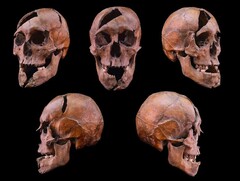More than seven centuries later, modern forensic science has helped solve a royal murder mystery. A team of researchers from Eötvös Loránd University (ELTE) and their international partners has confirmed the identity of skeletal remains uncovered in Budapest. Their findings, which were reported in Forensic Science International Genetics, show that the bones belong to Duke Béla of Macsó. He was a 13th‑century Hungarian nobleman and grandson of King Béla IV, who was killed in 1272. Here is how it was confirmed.
The genetic findings
The process of confirming the identity began with a full genetic examination. Researchers at the Institute of Archaeogenomics in Budapest, sequenced the entire genome and rebuilt the paternal line through the Y chromosome. They got a result of a combination of ancestries that correlates with what is known about Béla’s family. Nearly half of his genetic profile carried a northern European gene that matches the Rurikid ruling family.
Another part pointed to the Eastern Mediterranean, which fits the lineage traced through Maria Laskarina, his grandmother. When the team compared this information to a recent collection of Rurikid genetic data from Russia, the paternal line matched exactly. This genetic testing placed him where medieval documents say he belonged, as a later descendant of King Bela the Third.
Carbon dating discovery
Genetic evidence could not answer all the questions, so the researchers did some radiocarbon and isotopic studies. The first radiocarbon results gave dates that seemed too old. However, after looking at the carbon and nitrogen levels, they realized Béla likely ate a large amount of freshwater fish. That kind of diet can create what experts call a reservoir effect that makes his remains appear older than they should.
Strontium readings from the teeth filled in more of his story. The values they got confirmed that he actually spent his early childhood in the Vukovar and Syrmia region before moving to the area near Budapest. They also found some tiny particles trapped in his dental plaque that were viewed under the microscope. They found grains of wheat and barley that had been milled and baked, which match the diet expected in a wealthy household of that time.
Forensic Analysis
The skeleton also bore clear signs of the violence that ended his life. Forensic specialists mapped each injury and studied the angles of the blows. They counted twenty-six wounds that occurred at the time of death. Nine of the injuries struck the head with sharp weapons. The rest were slashing or chopping blows delivered to the torso and limbs.
The pattern suggested there was more than one attacker and more than one weapon used. He had some marks on the bones that suggest he tried to defend himself before he collapsed. This result fits long-standing accounts that describe a political attack carried out by several men.
Complete skeletons from the Arpad era are very rare to come by, which makes this find especially valuable. By combining genetics, chemical analysis, and forensic techniques, the researchers were able to answer questions that have been ongoing for hundreds of years.













